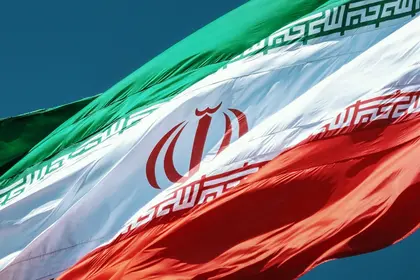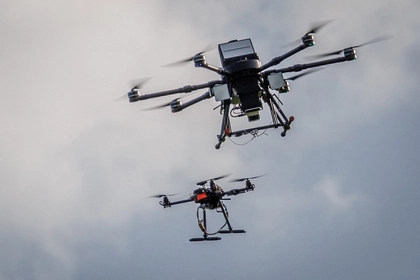Ukrainians have expressed solidarity with Israel after it woke up in the early morning on Oct. 7, 2023 to a barrage of rockets.
Indeed, it was eerily similar to the attacks Ukrainians have endured, which I dealt with in a recently co-authored Kyiv Post essay.
JOIN US ON TELEGRAM
Follow our coverage of the war on the @Kyivpost_official.
This current conflict is much more than a football match where one can root for one side or the other. The history leading up to this recent round of fighting is complex. On one level, the deployment of Iranian Shahed drones over Ukraine is connected to the fighting between Hamas and Israel, as part of Tehran’s grand strategy to undermine US alliances. Yet history also shows that Israel played a role in letting Hamas form in 1988 to counter its greater threat at the time, the secular Palestine Liberation Organization (PLO). Ironically, Israel and Iran played a role in the rise of Hamas.
A tale of two Octobers, and two Intifadas
Hamas launched a barrage of rockets and military incursions into Israeli territory, in a surprise attack at the end of the week-long Jewish holiday of Sukkot. Israelis likened it to the 1973 surprise Egyptian and Syrian assault on the occupied Sinai Peninsula and Golan Heights, which also occurred in October, also on a Jewish holiday, Yom Kippur.
One of the contributing triggers of the first Intifada (or Palestinian uprising) of 1987 was a November hang glider attack that killed six Israeli soldiers, coordinated by the Popular Front for the Liberation of Palestine-General Command. Within the span of a day on Oct. 7, 2023, Hamas launched a coordinated assault with several paragliders, along with thousands of rockets, capturing several dozen Israeli soldiers and civilians, and resulting in hundreds of deaths in Israel. Israel retaliated immediately against Gaza resulting in hundreds of Palestinian deaths.

Russia Tries to Sabotage Moldova’s European Ambitions as It Did for Georgia and Belarus
The first Intifada lasted until 1993. It is hard to fathom how long the repercussions of this attack will last.
The first Intifada was initially a spontaneous, homegrown protest movement, for the PLO had been in Tunis since 1983. Some of the local leaders, disillusioned with the secularist PLO, founded a Muslim resistance movement, patterned on Hizballah, called Hamas (“Courage” or “Movement of Islamic Resistance”). Scholarly research has shown that Israel covertly helped it emerge as a rival to the PLO. Ironically, Israel helped in the creation of a group that would inflict one of the most devastating blows to its security decades later, in October 2023.
Undermining the Abraham Accords
Israel has specifically implicated Iran in the latest attacks. Such rhetoric has worked to Iran’s advantage.
In October 2023, before the attack, there was speculation about the normalization of Saudi-Israeli relations at the expense of Palestinian statehood, so that the two states, the Kingdom of Saudi Arabia and Israel, could focus on forging a formal alliance to counter Iran. Now Iran has made such an alliance untenable with the most recent fighting.
The Abraham Accords did little to stabilize the actual Israeli-Palestinian conflict
During its tenure, the Trump administration sought to strengthen relations between governments that were friendly to American interests in the Middle East and hostile to Iran’s ambition in the region. Supporting Israel firmly, his administration proposed a settlement of the Arab-Israeli conflict that would have further subordinated the Palestinians to Israel, had it been accepted.
He also set in motion the reconciliation movement popularly known as the “Abraham Accords,” in 2020, whereby agreements were signed by the United Arab Emirates and Bahrain, joined later by Sudan and Morocco, to form diplomatic relations and normalize ties with Israel. These accords were criticized by many other Arab governments and opposed by the Palestinians. If they had been submitted to the citizens of the United Arab Emirates, Bahrain, Sudan, and Morocco, they would probably have been rejected. In reality, though, commercial and cultural ties had already been quietly formed between Israelis and Arabs in the countries concerned.
The Abraham Accords did little to stabilize the actual Israeli-Palestinian conflict, as demonstrated by events a few months later in May 2021, when a two-week round of violence erupted, sparked by the eviction of Palestinians from the Sheikh Jarrah area of occupied East Jerusalem. This issue led to Palestinian protests and a heavy-handed Israeli police response that spilled into the al-Aqsa mosque during the end of the month of Ramadan.
The area of the mosque is sacred to both religions, known to Muslims as the Noble Sanctuary, or Haram al-Sharif, and to Jews as the Temple Mount, and it had sparked the second Intifada in 2000, when Israeli politician Ariel Sharon led a defiant march there. The past demonstrates how single incidents could spark both Intifadas, igniting long held frustrations among the Palestinians.
Just as Israeli assaults on al-Aqsa led to the escalation of the 2021 conflict, when Israeli Jews, entered its grounds last week during the Sukkot holiday, this served as the justification for the retaliation on Oct. 7. The events of Oct. 7 were so spectacular in comparison that the repercussions will certainly reverberate among Palestinians and the region.
A redux of the 2021 war
In 2021 Hamas, based in Gaza, expressed solidarity with the Palestinians clashing with Israelis in Israel itself, notably in Lod, by launching rockets, demonstrating that it had the military means to reach Jerusalem and Tel Aviv, disrupting air traffic at the international airport. Surprisingly, some of its rockets were able to evade Israel’s Iron Dome defense system.
Hamas, armed with Iranian rockets, projected an image as the defender of the Muslim holy sites in Jerusalem. It outflanked its rival, Fatah of the Palestine Liberation Organization, based in the West Bank and relatively passive during the conflict, to appeal to Palestinians beyond Gaza. Yet, indirectly, Hamas let Iran take credit. The UAE, Bahrain, Morocco, and Sudan, signatories of the Abraham Accords with Israel, along with Saudi Arabia, are now in an awkward situation because of this recent violence.
Iran, on the other hand, in 2021 claimed that the spate of violence vindicated its anti-Israel stance to a transnational Arab and Muslim audience. It will do likewise in 2023. Iran’s Arab rivals, on the other hand, will be able to do little to mitigate the behavior of Prime Minister Netanyahu and his right-wing coalition in the Israeli Knesset as it retaliates in Gaza in the upcoming days.
A victory for Iran’s grand strategy
The Shahed drones flying over Ukraine were honed with technology given to non-state actors (NSA), like the Houthis in Yemen and Hamas. They overcome the technological hurdles of drone and rocket production to develop their own domestically produced arsenals.
Israel bombarded Hamas from the air, the US air force targeted Iraqi militias, and the Saudi air force did the same with Houthi militias. All three national air forces are technologically superior to the three NSAs they targeted. Yet all three NSAs, with unguided rockets or local drones based on Iranian designs, wreaked significant havoc upon their targets. These three NSAs have used rockets and drones to target Israeli and Saudi military bases, as well as US forces housed in Iraqi bases.
Iran has already achieved a regional victory from a relatively modest investment in Hamas and Islamic Jihad
The Houthis and Hamas have demonstrated they can also strike urban centers of Saudi Arabia and Israel, respectively. The fourth Iranian proxy, Hizballah of Lebanon, has a vast rocket arsenal that has the potential to strike Israel as well. With the blockade against Gaza, no one knows how much Iranian technology and weaponry were involved in the May 2021 and October 2023 attacks.
Iran’s drone program was refined when the Houthis tested their equipment against Saudi Arabia and the UAE. Iran provided its drones to Russia for its invasion of Ukraine in 2022. Meanwhile, Turkey supplied drones to Ukraine, a case of two Middle Eastern states supplying two European nations with arms, a first in modern history. Usually, weapons sales went in the other direction, as the Middle Eastern states consumed arms from Europe or the US. The fact that Iran has become a drone exporter is another victory in its grand strategy.
Ultimately, the very accusations of Iranian involvement in this conflict, or in Yemen and Iraq, serve as a tacit admission by the Islamic Republic’s adversaries – the US, Israel, and Saudi Arabia – that Iran has the means to strike all three while retaining plausible deniability.
No matter what will happen after Oct. 7, Iran has already achieved a regional victory from a relatively modest investment in Hamas and Islamic Jihad, another Islamist Palestinian group. Along with arming the Houthis and Hizballah with rockets, missiles, and drones, Tehran can claim plausible deniability in the most recent attacks yet reap the geopolitical rewards. In this strategy, when Iran provides Russia with drones to target Ukraine, it can also communicate that Tehran’s reach can even be felt over Ukrainian cities.
The views expressed in this opinion article are the author’s and not necessarily those of Kyiv Post.
You can also highlight the text and press Ctrl + Enter






